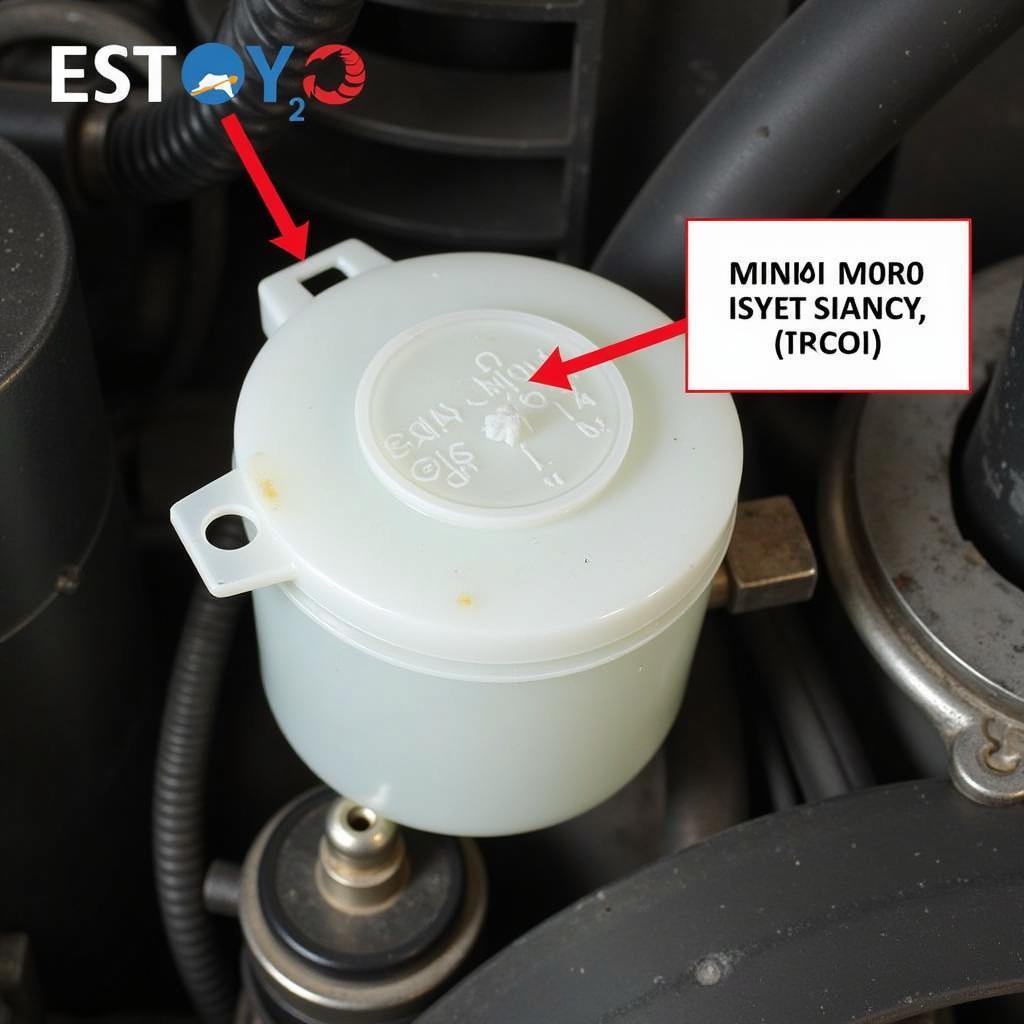You’re driving down the road, enjoying the smooth ride of your 2013 Mazda CX-5, when suddenly, you catch a glimpse of a dreaded sight: the brake warning light flashes on your dashboard. Before you can even process what’s happening, it disappears. Should you be worried?
A brief flicker of the brake warning light in your 2013 CX-5 doesn’t always signal a major problem, but it’s definitely a sign that something needs your attention. Let’s dive into the common causes and how you can diagnose the issue.
Common Causes of a Flickering Brake Warning Light
There are several reasons why your brake warning light might come on momentarily in your 2013 CX-5. Here are a few of the most frequent culprits:
1. Low Brake Fluid Level
The most common cause is low brake fluid. Your braking system relies on hydraulic pressure to function properly, and brake fluid is the lifeblood of this system. If the fluid level drops too low, air can enter the system, reducing braking efficiency and triggering the warning light.
2. Worn Brake Pads
Brake pads are designed to wear down over time. When they become too thin, a sensor within the brake pad assembly can trigger the warning light to let you know it’s time for a replacement.
3. ABS Issue
Your CX-5 is equipped with an Anti-lock Braking System (ABS) that helps prevent wheel lock-up during hard braking. A temporary malfunction within the ABS system, such as a faulty sensor, can also cause the brake warning light to illuminate briefly.
4. Faulty Brake Light Switch
Believe it or not, the brake light switch can also be a culprit. If this switch malfunctions, it might send an intermittent signal to the brake warning light system.
5. Electrical Glitch
Modern vehicles like your CX-5 are complex machines with intricate electrical systems. Occasionally, a minor electrical glitch or loose connection can cause the brake warning light to flicker.
Diagnosing the Issue
Now that you understand the potential causes, let’s explore how to pinpoint the exact problem:
1. Check the Brake Fluid Level: This is the easiest and most important step. Locate the brake fluid reservoir (refer to your owner’s manual if needed) and check the fluid level. If it’s below the “MIN” mark, add the appropriate DOT brake fluid (check your owner’s manual for specifications).
2. Inspect Your Brake Pads: Take a look at your brake pads through the spaces between the wheel spokes. If the pads are visibly thin or you notice a scraping sound when braking, it’s time for a replacement.
3. Scan for Trouble Codes: For a more in-depth diagnosis, especially if the brake fluid level and brake pads appear normal, consider scanning your vehicle for diagnostic trouble codes (DTCs). You can use an OBD-II scanner which can be purchased online or at most auto parts stores.
4. Consult a Professional: If you’re unsure about any of these steps or can’t seem to identify the issue, it’s always best to consult a qualified mechanic, especially one specializing in Mazda vehicles. They have the expertise and tools for a thorough diagnosis and repair.
Remote Diagnostics and Software Solutions
In today’s technologically advanced world, remote diagnostics and software solutions are becoming increasingly available for vehicle issues. Some companies specialize in remotely accessing your vehicle’s computer system to diagnose problems and even perform software updates or resets that might address the root cause of your brake warning light issue. This can be a convenient option, especially for minor software glitches.
“Remote diagnostics can be a game-changer,” says Jason Miller, a senior automotive electrical engineer specializing in remote diagnostics. “We can often pinpoint the issue and sometimes even resolve it without the vehicle ever needing to come into the shop.”
Don’t Ignore the Warning
While a fleeting brake warning light might not always indicate a critical problem, it’s crucial not to ignore it. Addressing the issue promptly can help ensure your safety and prevent potentially more costly repairs down the road.
By understanding the potential causes and taking the necessary steps to diagnose the issue, you can keep your 2013 Mazda CX-5 running smoothly and safely.
FAQs
1. Can I drive my CX-5 with the brake warning light on?
It’s not recommended to drive with any warning light illuminated. If possible, pull over to a safe location and check the brake fluid level. If it’s low, add fluid and drive cautiously to a mechanic. If the light remains on or you notice any braking issues, have the vehicle towed to a repair shop.
2. How often should I check my brake fluid level?
It’s a good practice to check your brake fluid level at least once a month and every time you check your engine oil.
3. How much does it cost to replace brake pads?
The cost of brake pad replacement varies depending on the brand of pads, labor costs, and your location. On average, you can expect to pay between $150 and $300 per axle.
4. What is a brake fluid flush, and do I need one?
A brake fluid flush involves removing the old brake fluid from the system and replacing it with fresh fluid. It’s recommended to have your brake fluid flushed every 2-3 years or as recommended by your vehicle manufacturer.
5. Can I use any type of brake fluid in my CX-5?
No, using the incorrect type of brake fluid can damage your braking system. Refer to your owner’s manual for the specific DOT rating and type of brake fluid recommended for your CX-5.


